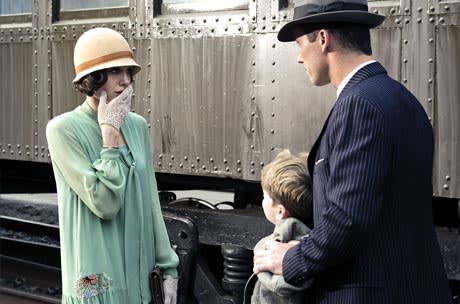At age 78, Clint Eastwood has had what might be an unprecedented run of sterling late career work, beginning with Mystic River in 2003, continuing through Million Dollar Baby (2004) and his 2006 World War II diptych (Flags Of Our Fathers and Letters From Iwo Jima). Each of these films is marked by sober, reflective craftsmanship, shot through with a piercing sense of loss. In other words, they are plainly the work of an old master. Add Changeling to the list. This film, one of the year's most unjustly overlooked, dramatizes an unsettling, mostly forgotten episode in Los Angeles history. It begins in 1928, when single mother Christine Collins (Angelina Jolie) loses her young son Walter. The LAPD find a boy claiming to be the missing child but Collins insists he is not. What follows must surely stand as one of the most harrowing gauntlets endured by a heroine in movie history, as Collins endures accusations of hysteria, public denunciation and incarceration in a snake-pit insane asylum. With its measured pacing, loving attention to period detail and a colourful supporting cast (notably John Malkovich in a wonderful turn as a crusading preacher who rallies to Collins' defence and Jason Butler Harner as child-killer Gordon Northcott), Eastwood's film stands as a richly layered, unabashedly feminist successor to the '30s tradition of suffering women's pictures like Stella Dallas, while Harner's comic, grotesque, alternately monstrous and pathetic turn mirrors one of the great performances in '30s cinema: Peter Lorre's anti-hero in M. Oddly enough, it is Jolie's performance that most likely prevents Changeling from joining the front ranks of Eastwood films. If you excuse one hideously misconceived scene between her and Harner toward the movie's end as a rare directorial miscalculation, she is utterly moving and convincing. However, she maintains the same wan note throughout. One can't help but ponder what a preternaturally resourceful actress like Cate Blanchett might have brought to the part — certainly a more deeply felt interior life and a broader emotional range. Still, Jolie, an eerie, wraith-like figure in her vintage flapper clothes, adds a distinctive wounded glamour to the film's visual scheme. Extras consist of two standard issue making-of documentaries.
(Warner)Changeling
Clint Eastwood

BY Mark CarpenterPublished Mar 5, 2009